Turkish Vegan Recipes: Zeytinyağlı Kereviz (Turkish Braised Celeriac)
Discover the flavors of Turkey with the delightful dish of zeytinyağlı kereviz. This braised celeriac delicacy showcases the essence of Turkish cuisine, highlighting the seasonal produce of winter. With its luscious olive oil base and a medley of supporting ingredients, zeytinyağlı kereviz offers a unique and satisfying culinary experience. Join us on a journey to explore the origins, preparation, and delightful flavors of this traditional Turkish dish that will surely tantalize your taste buds.
Exploring Zeytinyağlı Kereviz
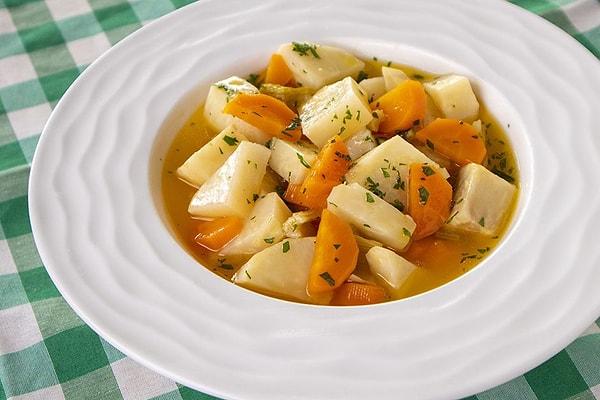
Zeytinyağlı kereviz, a well-loved dish in Turkey, refers to braised celeriac that is commonly enjoyed. This dish is a seasonal favorite, making use of the freshest winter produce available.
While carrot and orange also play significant roles as supporting ingredients, it is the celeriac, known as kereviz in Turkish, that takes center stage. Zeytinyağlı kereviz belongs to a category of dishes called 'zeytinyağlı' in Turkish, which translates to 'with olive oil.' These dishes typically consist of vegetables that are slowly cooked in ample amounts of olive oil until they become tender and flavorful.
How to make it?
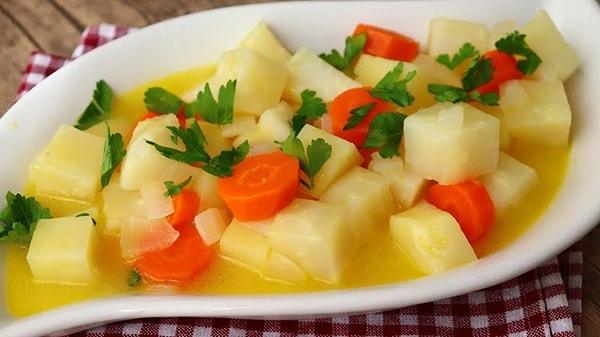
Preparing this braised celeriac dish is a breeze. The key lies in using an ample amount of high-quality olive oil, preferably extra virgin olive oil, which has been traditionally used in Mediterranean cuisine. Opting for extra virgin olive oil ensures that the dish doesn't feel greasy and enhances its overall flavor. Personally, I recommend using a mild extra virgin olive oil sourced from the Aegean region.
Like most zeytinyağlı dishes, this recipe begins by sautéing onions in olive oil until softened. Then, the remaining ingredients are added, allowing the gentle heat and time to work their magic, transforming the raw components into a deliciously tender braise. While carrots are commonly included in this dish, I like to add potatoes as well, but feel free to omit them as not all variations of this dish include potatoes.
Although this dish doesn't require much liquid, its composition is crucial. A combination of orange and lemon juice provides a delightful sour flavor with subtle hints of sweetness that beautifully complement the braised celeriac. Initially, I found it strange to add orange juice, but as with any traditional recipe that has stood the test of time, there's no need to worry—it truly works!
Ingredients
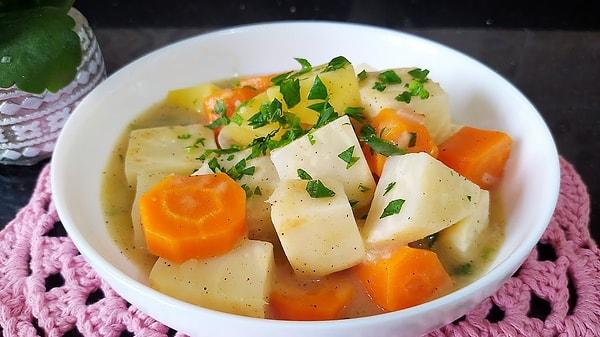
5 Tbsp (75 ml) olive oil
1 medium sized onion, finely chopped
1 large celeriac, peeled and cut into 3-4 pieces
1 medium size potato, peeled and cut into 3-4 cm pieces
1 large carrot, halved lengthways and cut into 1 cm pieces
1 large orange, juice only (100 ml/⅖ cup)
100 ml water
1 Tbsp lemon juice, or to taste
1 tsp sugar
the leaves of the celeriac (or flat leaf parsley), finely chopped (optional)
salt and pepper
Step-By-Step
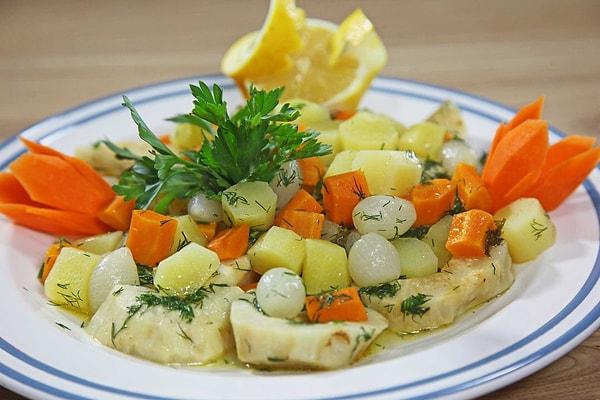
To start, place a pot with a thick bottom on medium heat. Sauté the onion in the olive oil until it becomes soft and translucent, taking care not to let it brown. This process usually takes around 8-10 minutes. Stir the mixture regularly to prevent it from sticking to the pot.
Include the celeriac, potato, and carrot to the pot, ensuring they are well combined. Pour in the orange juice, lemon juice, sugar, water, and season generously with salt and pepper. Bring the mixture to a boil and then reduce the heat to low. Cover the pot and allow it to simmer until the vegetables are fully softened, typically taking around 40-50 minutes, although the cooking time may vary based on the size of the vegetable chunks. Stir the mixture a few times during this process and add additional water if needed to maintain the desired consistency.
Remove the pot from the heat and incorporate the chopped celeriac leaves or flat-leaf parsley. Adjust the seasoning with salt and pepper according to your taste preferences and add additional lemon juice if desired. Allow the mixture to rest for an additional 5-10 minutes before serving.
How to serve?
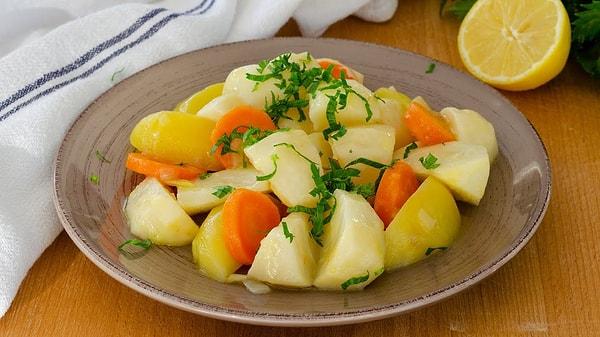
Zeytinyağlı kereviz is commonly enjoyed as a vegetarian main course, although in Turkey, it is typically served as a side dish.
If you follow a vegetarian diet and wish to create a complete meal, consider serving zeytinyağlı kereviz with a legume-based dish for added protein, and optionally, a simple fresh salad. Alternatively, if you plan to enjoy this dish on its own, you can incorporate a couple of handfuls of cooked chickpeas for protein. While this addition may not align with traditional preparations, it should work well if you intend to serve zeytinyağlı kereviz as the sole dish.

Send Comment